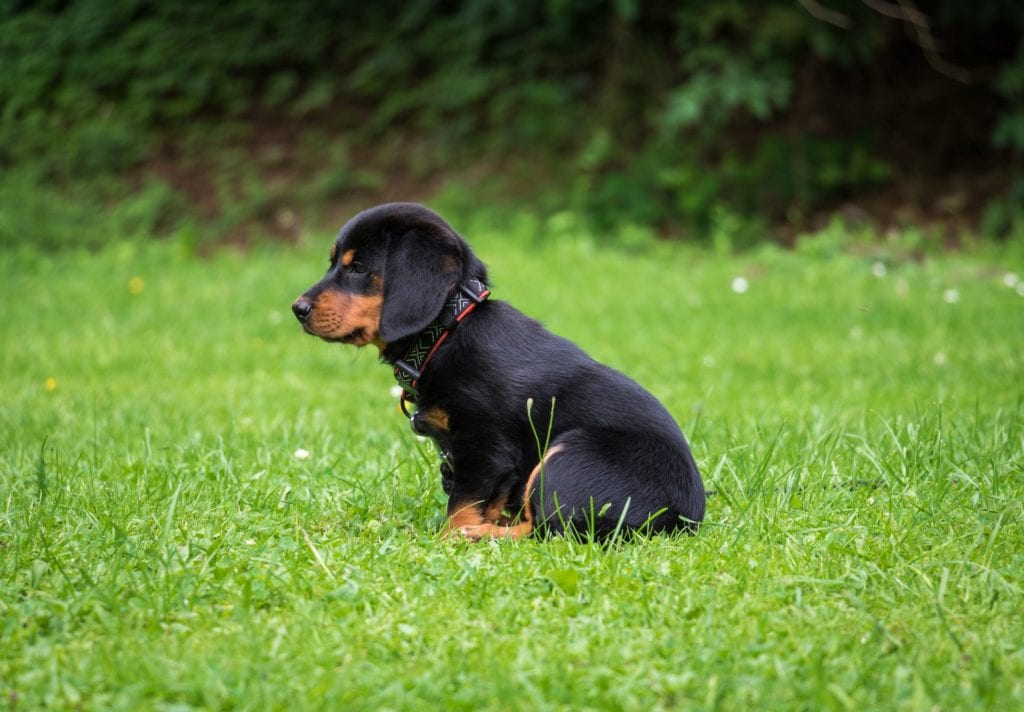One of the first and most important tasks to tackle as a new puppy owner is house training. This typically takes between four and six months, but in some circumstances can take up to a year. A little knowledge and a well laid out plan can drastically reduce this time. Here are a few tips to get you started.
Pick the Right Time
At eight weeks, your puppy is unlikely to have sufficient control over their body to begin the process of potty training. Conversely, if you wait too long, you will have to work hard on overcoming established habits. Typically, a puppy can hold their bladder for as many hours as their age in months. For example, an 8 week old puppy will likely not be able to hold it for more than 2 hours. Use this information to determine when (and how often) you should be taking your puppy outside to do their business.
Choose a Spot
Consistency is a crucial aspect of house training. Choose a spot either in the garden or sufficiently close to your house and take your puppy to the same place each time. The presence of their own scent will prompt them to go. At the start, you might want to take a newspaper or puppy pad that your pet has already used to give them the right idea.

If you are away from the house for long hours at a time, you may also want to train your puppy to go to the toilet in a specific place in the house. Designate a space and lay down newspapers or puppy pads. Again, encourage your puppy to use the area for toilet by making use of their scent.
Establish a Routine
New puppy owners may be tempted to put down food and leave it for their puppy to have when they want, but getting them on a regular feeding schedule will help you to anticipate their toilet needs more easily. Decide on feeding times and make sure you remove food between meals.
Alongside this, get into the habit of frequently taking your puppy outside. It’s always good to do this first thing in the morning and then at regular intervals throughout the day – after meals and naps are key times. Initially, you may need to do this every hour or so, but you will gradually be able to increase the time between trips as they get older.
Be Patient and Persevere
Encourage your puppy to explore their toilet spot. Walking around and sniffing can stimulate going to the toilet. Avoid distracting your dog through play at this time.
If they haven’t gone to the toilet after five minutes, take them back into the house but keep a close eye on them. You may need to make several trips to the garden before the puppy will finally go to the toilet.
Don’t leave your puppy outside in the hopes that they will eventually go on their own. Puppies do not like to be left alone, and so will focus on trying to get back to you. Leaving them to it also means that you miss the opportunity to reward the behavior, which leads us on nicely to the final point.
Mark the Behavior
Makes sure to praise and reward your puppy when they do eliminate in the correct place. A treat or a quick walk around the block can prompt them to maintain positive behaviors. If your puppy goes, mark that behavior with an excited “YES!” and reward immediately after they are done.
Alongside this, be aware of any signs that your puppy needs to go to the toilet. These include whining, circling, and sniffing – take your puppy straight out when you see these. Your puppy might also develop some alerting behaviors such as barking or scratching at the door. Encourage these as they can help in preventing accidents.
Your pup will start to WANT to let you know they have to go because nothing good happens when they eliminate inside, but great things happen when they go outside!
Paw & Order Dog Training® is a registered trademark of Paw & Order, LLC. All brand or product names are or may be trademarks of, and are used to identify products and services of, their respective owners.
Paw & Order Dog Training® offers professional dog training in Western PA, Southwest FL (Ft. Myers/Cape Coral/Naples area), Twin Cities, MN (Minneapolis/Saint Paul area) Upstate SC (Greenville), Houston/Galveston, TX. Each Paw & Order location in independently owned and operated.
You don’t have to accept your dog’s bad behaviors. You can fix them, and our dog trainers can help! We will investigate and solve your dog’s behavior problems!